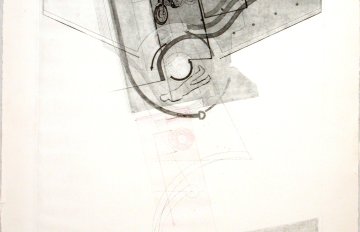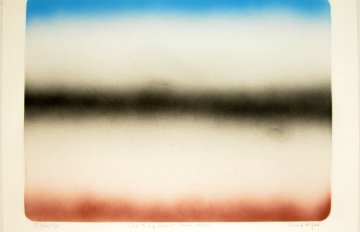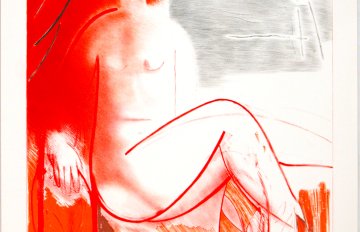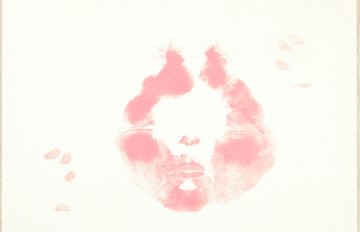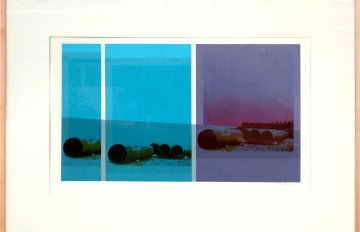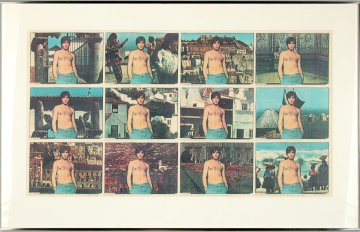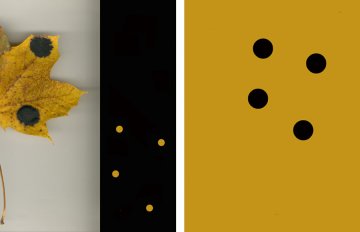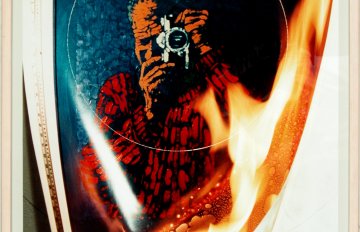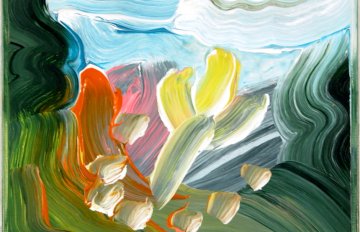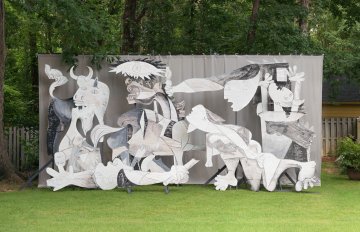30 March 2021 to 6 March 2022
Curated by Lucy Bilson
Featuring works by Barbara Astman, Walter Bachinski, Susan Coolen, Michael Flomen, John Hofstetter, Thomas Lax, Ron Martin, David Rifat, Michael Snow, Douglas Walker, Joyce Wieland, and Ossip Zadkine
“I have never been very interested in pushing the limits of legibility for its own sake. Absolute clarity, or extreme distortion, is too simplistic a goal… I wanted to explore the complex possibilities that lie somewhere in between.” — Jeffery Keedy, Graphic Design in the Postmodern Era (1998)
Legibility refers to our ability to clearly see what is before us: specifically, the quality of being clear enough to read. It is underpinned by the desire to communicate with clarity and avoid misinterpretation. But what does it mean for an artwork to be legible? Is it intertwined with representation and abstraction, our understanding of the artist’s intentions, or something else? This exhibition of works from the Permanent Collection explores questions of completeness, visually ambiguous forms, and the communication of the intangible.
Layered and merging planes, visual distortion, and repeating images are just some of the formal techniques employed to translate intangible thoughts between artist and viewer. Susan Coolen’s Parochial Views No. 6: Parlance #4 presents a tension between equivalent legible and illegible forms, whereas Ron Martin’s Untitled is a ghost — the marks that remain after the painting medium has evaporated. Even when intentional or obvious, illegibility embraces the fragility of the unknown and creates works which seem unfixed, in flux, and open to conversation.
Illegibility offers interesting opportunities for the viewer to contemplate or complete works in their mind, without explicit direction from the artist. It is an invitation to insert oneself into the narrative of the work and to find possibilities in moments of ambiguity.
Watch our first Public Domain video featuring curator Lucy Bilson introducing the ideas behind this exhibition:
In our second Public Domain video in this series, artist and educator Sarah Kernohan guides viewers through techniques for slow looking with a focus on Michael Snow's Smoke and Mirrors and Thomas Lax's Motorcycle Accident.
Lucy Bilson returns for our third Public Domain video in this series to revisit the idea of illegible images and guide viewers through a closer look at the works of Walter Bachinski, Joyce Wieland and John Hofstetter:
For our fourth Public Domain video, we invited three former members of the Kitchener-Waterloo Poetry Slam - Janice Jo Lee, Bashar Lulu Jabbour, and Ryan Antooa - to compose spoken-word responses to selected works by Barbara Astman, Susan Coolen and Michael Flomen.
For our fifth Public Domain video on this exhibition, children in KWAG's Summer Art Camp draw on questions posed by curator Lucy Bilson to offer their wildly imaginative interpretations of David Rifat's One Tulip Doesn't Seem Much.
KWAG Public Domain is supported by the Canada Council for the Arts, the City of Waterloo, the Elizabeth L. Gordon Art Program, Kitchener Waterloo Community Foundation, the Ontario Arts Council, the Ontario Arts Foundation, and the Region of Waterloo Arts Fund.
Lucy Bilson is a designer, researcher, and educator working at the periphery of contemporary graphic design practice. In addition to operating Lucy Bilson Design, Lucy’s creative practice explores the interdisciplinary space between design and art, often using her work to contest the boundaries of contemporary practice.
This Corridor Gallery exhibition is kindly supported by Activa.

David Rifat (Canadian, b. Scotland 1934). One Tulip Doesn't Seem Much, 1974. Serigraph (silk screen), 66.3cm x 84.1cm. Kitchener-Waterloo Art Gallery Collection. Gift of the Ontario Arts Council, 1975. © KWAG. Photo: KWAG.


